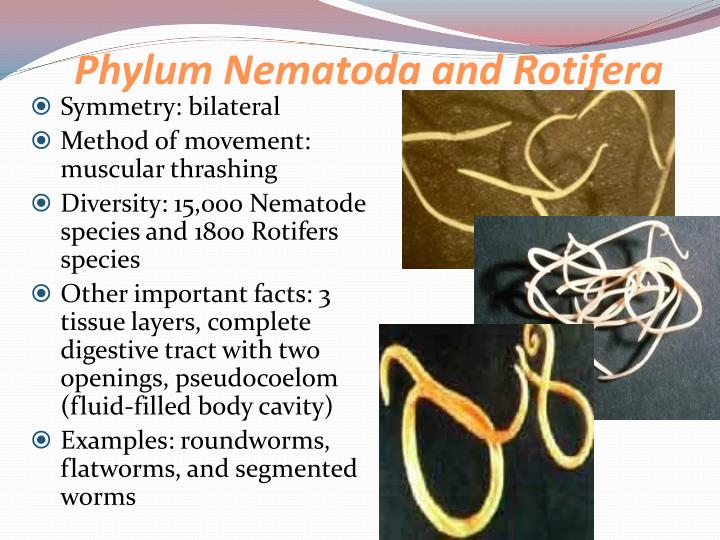
Phylum Rotifera and Phylum Nematoda; Phylum Kinorhyncha
The 1,500 to 2,000 species in the phylum Rotifera, like other members of the kingdom Animalia, are multicellular, heterotrophic (dependent on other organisms for nutrients), and lack cell walls. But rotifers possess a unique combination of traits that distinguish them from other animals, including bilateral symmetry and a pseudocoelom , a fluid-filled body cavity between two different layers of embryonic tissue. The pseudocoelom serves as a sort of circulatory system and provides space for a complete digestive tract and organs. It is also found in the closely related phylum Nematoda, a very common group of roundworm species. Unlike nematodes, which tend to live in moist soil, rotifers generally inhabit fresh water, although some species can be found in salt water or wet soil. Rotifers (Latin for "wheel bearers") have an unusual mode of transportation: a crown of beating cilia surrounds their mouth, propelling the animal head-first through the water. Rotifers eat protists, bits of vegetation, and microscopic animals (such as young larvae), which they suck into their mouths with the vortex generated by their cilia. Their jaws are hard and their pharynx is muscular, allowing them to grind up their food.
Reference:
- Miller, A.S. and Harley, J.B., 1999 & 2002 . Zoology , 4th and 5th Edition (International), Singapore:McGraw Hill.


